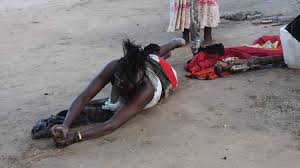The first Africa Climate Summit opens on Monday in Kenya to highlight the continent that will suffer the most from climate change while contributing the least.
Significant investment in Africa’s adaptation to climate change, including better forecasting, will be an urgent goal at the September 5-6 meeting. At the heart of every issue on the agenda, from energy to agriculture, is the lack of data collection that drives decisions as crucial as when to plant – and when to flee.
The African continent is larger than China, India, and the United States combined. Yet, Africa has just 37 radar facilities for tracking weather – an essential tool along with satellite data and surface monitoring, according to a World Meteorological Organization (WMO) database. Europe has 345 radar facilities. North America, 291.
“The continent, at large, is in a climate risk blind spot,” said Asaf Tzachor, a researcher at the Center for the Study of Existential Risk at the University of Cambridge.
In August, he and colleagues warned in a commentary for the journal Nature that climate change will cost Africa more than $50bn every year by 2050. By then, Africa’s population is expected to double.
The widespread inability to track and forecast the weather affects key development choices, their commentary said. “There is no point investing in smallholder farms, for example, if floods are simply going to wash them away.”
‘On the front lines’
United Nations chief Antonio Guterres said he would address “two burning injustices of the climate crisis” at the Africa Climate Summit.
First, African countries have contributed almost nothing to global warming “and yet they are on the front lines of today’s supercharged storms, droughts and floods”, Guterres said.
Secondly, while Africa has abundant solar, wind, and hydropower as well as critical minerals, its governments face high levels of debt and interest rates that impede investment in renewable energy.
Properly forecasting the weather is another area in dire need of attention.
Kenya, the host of the climate summit, is one of the few countries in Africa seen as having a relatively well-developed weather service, along with South Africa and Morocco. Kenya has allocated about $12m this year for its meteorological service, according to the National Treasury. In contrast, the US National Weather Service budget request for fiscal year 2023 was $1.3bn.
The vast expanse of the 54-nation continent is relatively unserved and unwarned.
“Despite covering a fifth of the world’s total land area, Africa has the least developed land-based observation network of all continents, and one that is in a deteriorating state,” the WMO said in 2019.
In countries such as Somalia and Mozambique, with some of the continent’s longest and most vulnerable coastlines, the lack of effective weather monitoring and early warning systems has contributed to thousands of deaths in disasters such as tropical storms and flooding.
After Cyclone Idai ripped into central Mozambique in 2019, residents said they received little or no warning from authorities. More than 1,000 people were killed, some swept away by floodwaters as loved ones clung to trees.
Idai was the costliest disaster in Africa, at $1.9bn, in the period from 1970 to 2019, according to a WMO report on weather extremes and economic and personal tolls.
The lack of weather data in much of Africa also complicates efforts to link certain natural disasters to climate change.
Earlier this year, a collection of climate researchers known as World Weather Attribution said in a report limited data made it impossible to “confidently evaluate” the role of climate change in flooding that killed hundreds of people in the Democratic Republic of the Congo and Rwanda around Lake Kivu in May.
“We urgently need robust climate data and research in this highly vulnerable region,” their report said
Source Aljazeera










